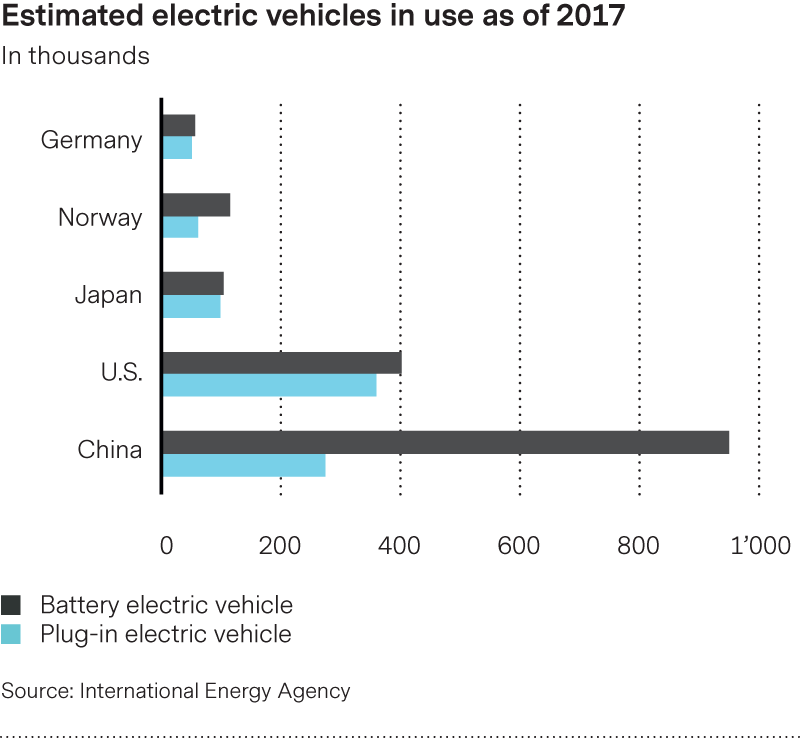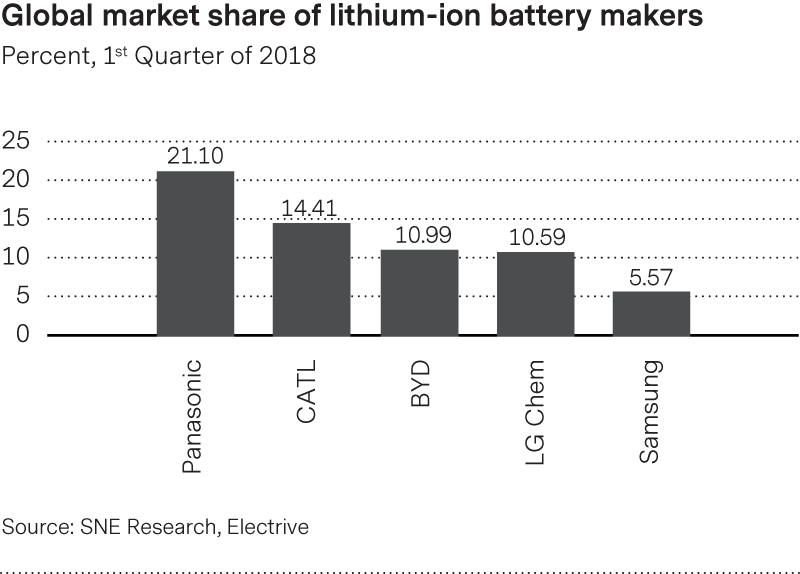China in the Fast Lane
The proportion of electric vehicles on the road is still low. This could change soon. Emerging countries like China are promoting this means of transport and want to become leading nations both in this market segment as well as in battery production.
In view of the multitude of charging stations for electric vehicles in the Western hemisphere, you could be forgiven for thinking that the industrial countries are particularly advanced when it comes to technical innovations. But a few thousand miles away, emerging countries like China have gained in speed. So-called e-vehicles (EVs) are purring from one Chinese metropolis to the next. Chinese car drivers have bought more electric vehicles than anyone else: According to Bloomberg, over the past year more than a half of global sales in this segment took place in China.

E-mobility is not limited to cars alone. In 2017, the number of electric buses increased to 370,000, compared with 345,000 in 2016. The number of electric two-wheelers reached 250 million, indicating that e-mobility is available for every budget. This electrification was driven by China, which is home to more than 99 percent of electric buses and bikes.
China, the Detroit of e-mobility
Why the sudden increase in e-mobility? The most important driver is the Chinese government, which is targeting seven million electric vehicles by 2025. China is not only suffering from severe environmental pollution. It is also heavily dependent on imported oil, which is seen as a strategic vulnerability. For those reasons, the government is offering a tax discount to buyers of e-vehicles. Stricter emissions regulations and quotas for low-emissions vehicles provide an additional incentive to make the switch. In addition, Beijing is aiming to dominate the global battery market. In 2017 the production of lithium batteries in China increased by 31 percent to 1.18 billion units. Batteries are a critical success factor for e-mobility, as they currently represent up to half of total costs.
The aggressive Chinese policy is diminishing the reputation of South Korea and Japan as the world’s leading battery destinations and is affecting manufacturers such as Panasonic and Samsung. CATL, China’s fastest growing battery producer, is already in second position worldwide.
In view of the high number of countries looking to reduce their CO2 footprint, the number of electric vehicles will probably continue to grow. German and British legal initiatives have prompted many consumers to reflect on alternatives. Further countries should follow suit.
So it is no wonder that many car manufacturers are offering incentives to trade in cars with combustion engines for electric vehicles. However, even for the latter, their environmental footprint needs to be improved considerably to further increase the attractiveness of this mode of transport.
It will be fascinating to see which geographic region assumes market leadership with respect to battery production until such time. Will China remain in the fast lane or can the traditional automotive countries catch up?
Additional information
Would you like to know more about our megatrend “battery energy storage”? We would be happy to provide you with further information.







